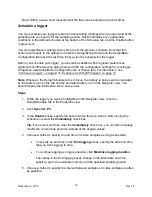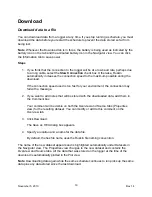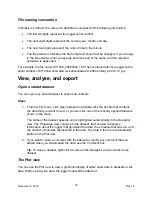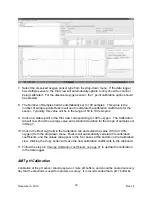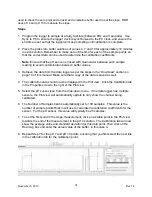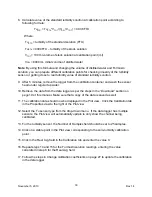
7. Select the dissolved oxygen sensor type from the drop-down menu. If the data logger
has multiple sensors, the Plot view will automatically update to only show the channel
being calibrated. For the dissolved oxygen sensor, the 1 point calibration option should
be selected.
8. The Number of Samples field is automatically set to 100 samples. This value is the
number of sample points Ruskin will use to calculate the calibration coefficients for the
sensor. Typically, this value will be in the range of 50 to 100 samples.
9. Click on a stable point in the Plot view corresponding to 100% oxygen. The Calibration
tab will now show the average value and standard deviation for the range of samples set
in Step 7.
10. Click in the Real Avg field in the Calibration tab and select the value 100 (for 100%
oxygen) from the drop-down menu. Ruskin will automatically calculate the calibration
coefficients, and the values will appear in the four boxes at the bottom on the Calibration
view. Clicking the Copy button will save the new calibration coefficients to the clipboard.
11. Follow the steps in
Change calibration coefficients on page 27
to update the calibration
in the data logger.
AMT pH Calibration
Calibration of the pH sensor should use two or more pH buffers, and should be carried out every
day that the electrode is used for optimum accuracy. It is recommended that a pH 7 buffer be
November 5, 2010
Rev1.4
30

